18 Incredible Animals Found Only on Islands Around the World
Islands often become home to animals that cannot be found anywhere else. Their isolation allows unique species to thrive, creating some of the most fascinating wildlife on the planet. From giant reptiles to tiny primates, these creatures have adapted to their surroundings in remarkable ways. Here are some incredible animals that live only on islands around the world.
This post may contain affiliate links, which helps keep this content free. Please read our disclosure for more info.
Komodo Dragon – Komodo Island, Indonesia
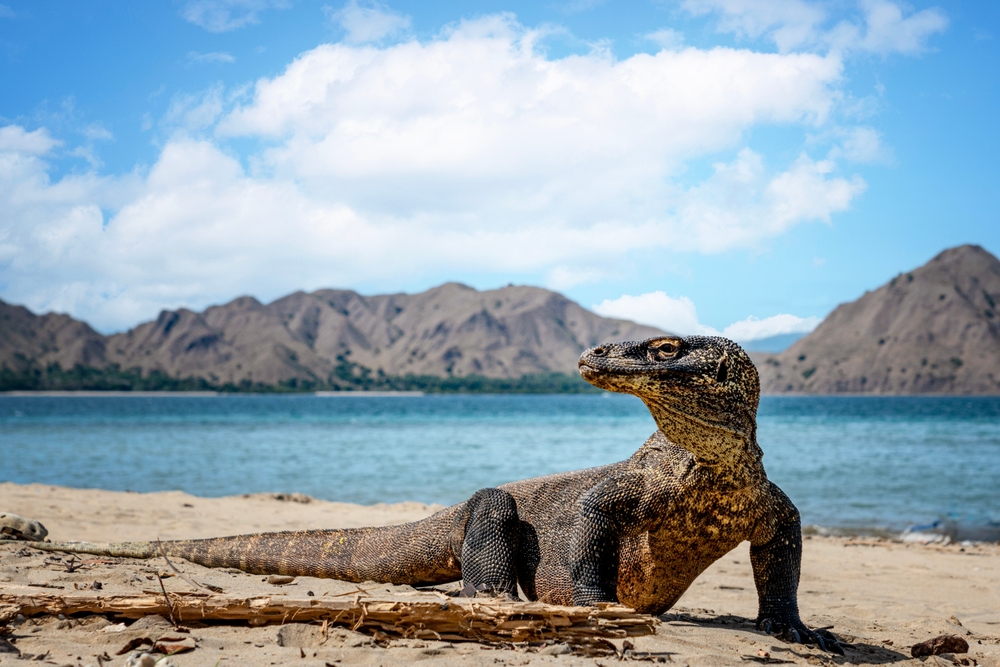
The Komodo dragon is the largest living lizard, reaching lengths of up to ten feet. Its size and strength make it a top predator on the small islands of Indonesia where it roams freely. With sharp teeth and a powerful bite, it can bring down prey much larger than itself. Despite its fearsome reputation, it is an important part of its ecosystem.
These dragons spend much of their time basking in the sun, conserving energy for hunting. They are skilled swimmers, moving between islands in search of food. Their diet includes deer, wild boar, and even carrion when opportunities arise. Tourists travel from around the world just to catch a glimpse of this ancient reptile in its natural environment.
Fossa – Madagascar
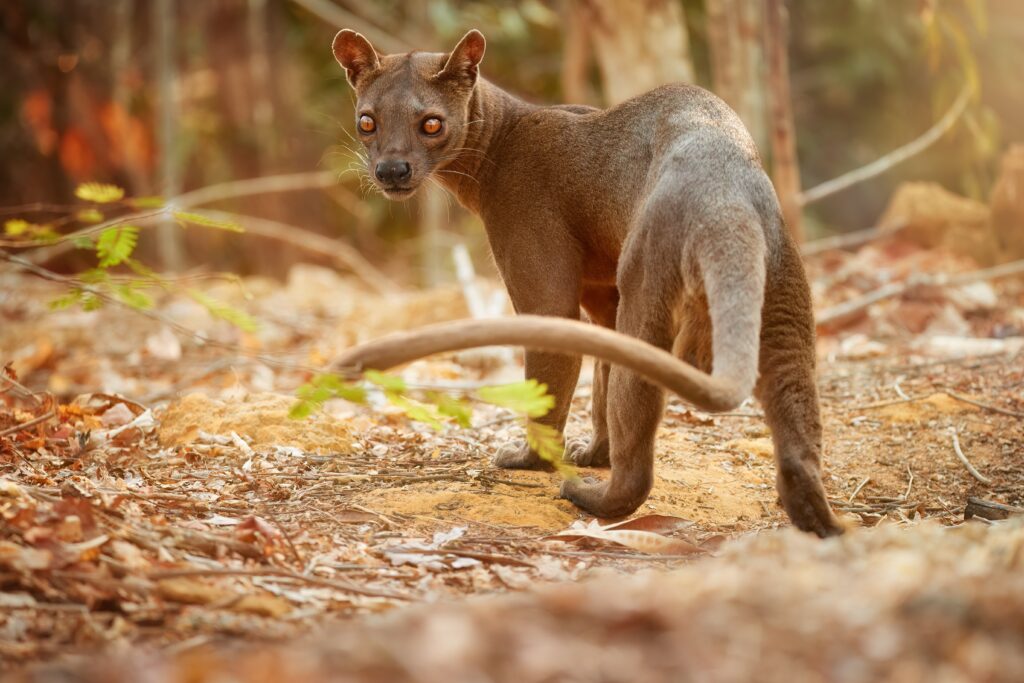
The fossa is a sleek, catlike predator found only in Madagascar. Although it resembles a big cat, it is actually more closely related to the mongoose. Its long tail helps it balance as it leaps through the trees in pursuit of prey. Lemurs are its favorite food, and it plays a vital role in keeping their populations in check.
Often active both day and night, the fossa is an elusive animal that few people get to see. It moves swiftly across the forest floor and just as easily climbs into the canopy. Solitary by nature, it marks its territory with scent to keep rivals away. Sadly, habitat loss threatens its survival, making it one of Madagascar’s most vulnerable carnivores.
Aldabra Giant Tortoise – Aldabra Atoll, Seychelles
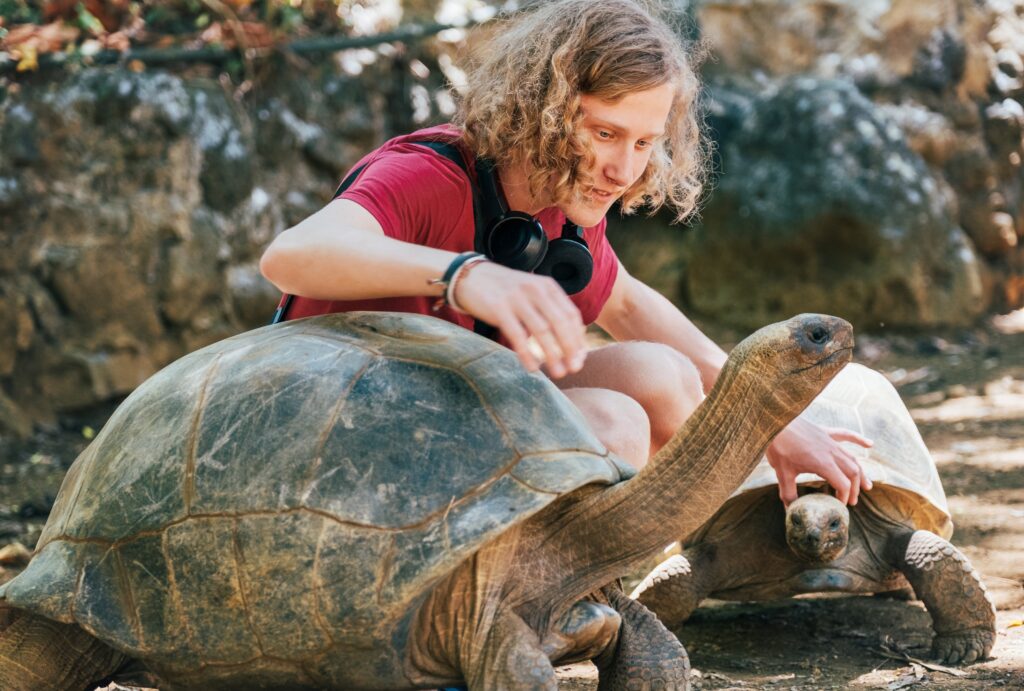
The Aldabra giant tortoise is one of the largest tortoises in the world, weighing hundreds of pounds. These gentle giants roam the islands slowly, feeding on grasses, shrubs, and leaves. Their thick shells protect them from predators, and their calm movements have made them a symbol of the Seychelles. Some individuals are believed to live for well over a century.
These tortoises play an important role in shaping their environment. By grazing and trampling, they open up vegetation, allowing new plants to grow. They also help disperse seeds as they feed. Visitors often marvel at their peaceful presence, a reminder of how ancient and enduring these reptiles are.
Tarsier – Bohol, Philippines
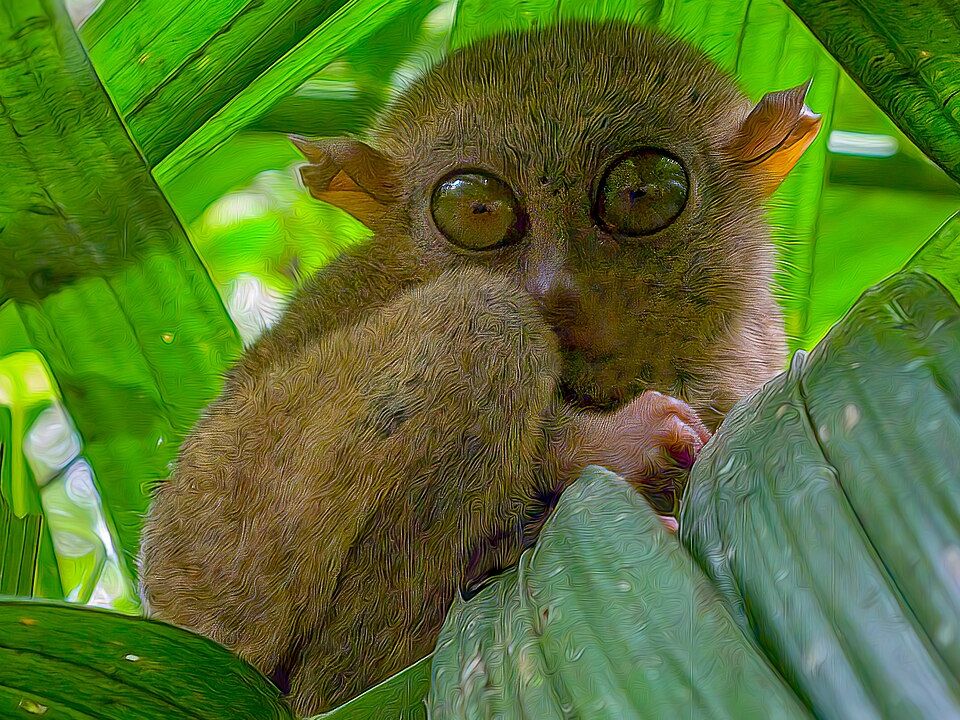
The tarsier is a tiny primate with large, round eyes that help it see in the dark. Native to a few islands in the Philippines, it clings to tree branches with long, slender fingers. Its head can rotate almost 180 degrees, giving it a wide field of vision. Insects are its main diet, and it leaps with precision to catch them midair.
Tarsiers are nocturnal and spend the day hidden in dense foliage. At night, their calls echo through the forest as they communicate with one another. They are sensitive to disturbance, making conservation efforts especially important. For many, seeing a tarsier in the wild is a highlight of visiting the Philippines.
Galápagos Marine Iguana – Galápagos Islands, Ecuador
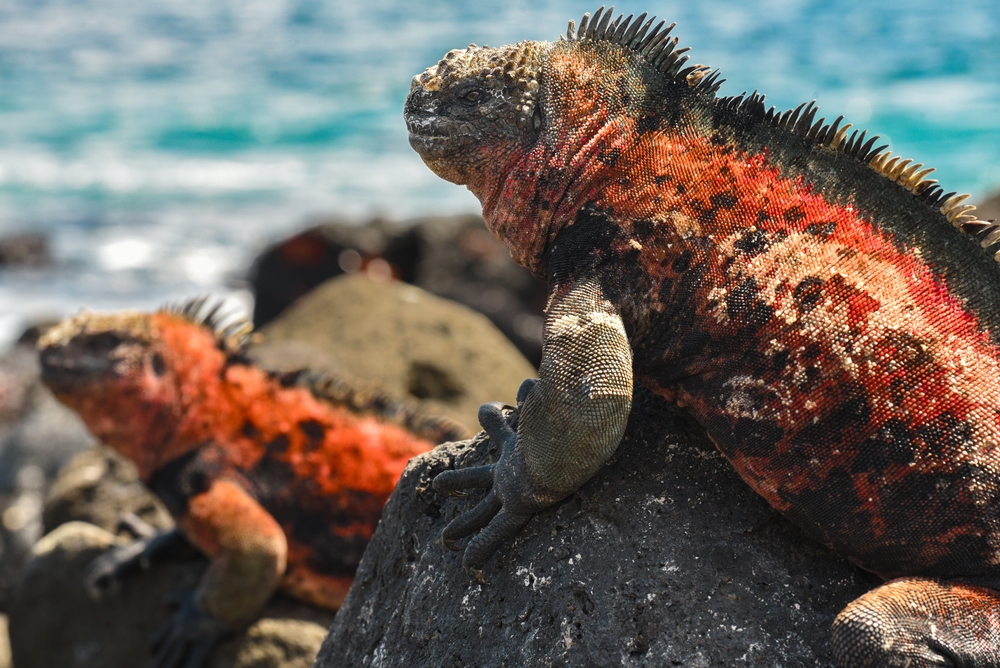
The Galápagos marine iguana is the only lizard in the world that feeds in the ocean. It dives into the waves to graze on algae, holding its breath for several minutes. Its dark skin helps it absorb heat quickly once back on land. Salt glands near its nose allow it to expel excess salt, often in the form of a sneeze.
These iguanas gather in large groups along the rocky shores, soaking up the sun. Their claws are sharp and curved, perfect for gripping slippery rocks in the surf. Though they appear sluggish, they are agile swimmers. Tourists are often amazed to see reptiles thriving in a marine environment, something seen nowhere else.
Lemurs – Madagascar
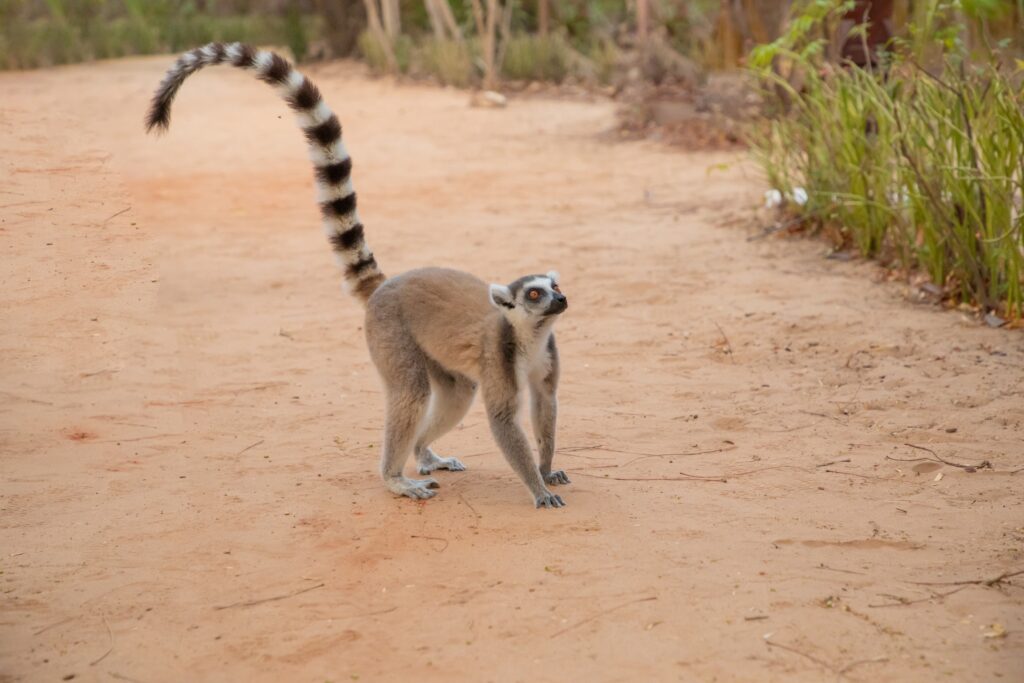
Lemurs are perhaps Madagascar’s most famous residents, with dozens of species found only on the island. They range from tiny mouse lemurs to the striking ring-tailed lemur. Social and expressive, many live in groups where grooming plays an important role. Their calls, songs, and movements fill the forests with life.
Each species has its own habits and diet. Some feed on fruit, while others rely on leaves or nectar. Many are active during the day, but certain species prefer the night. With their diversity, lemurs illustrate how isolation can give rise to a wide range of unique animals.
Kiwi Bird – New Zealand
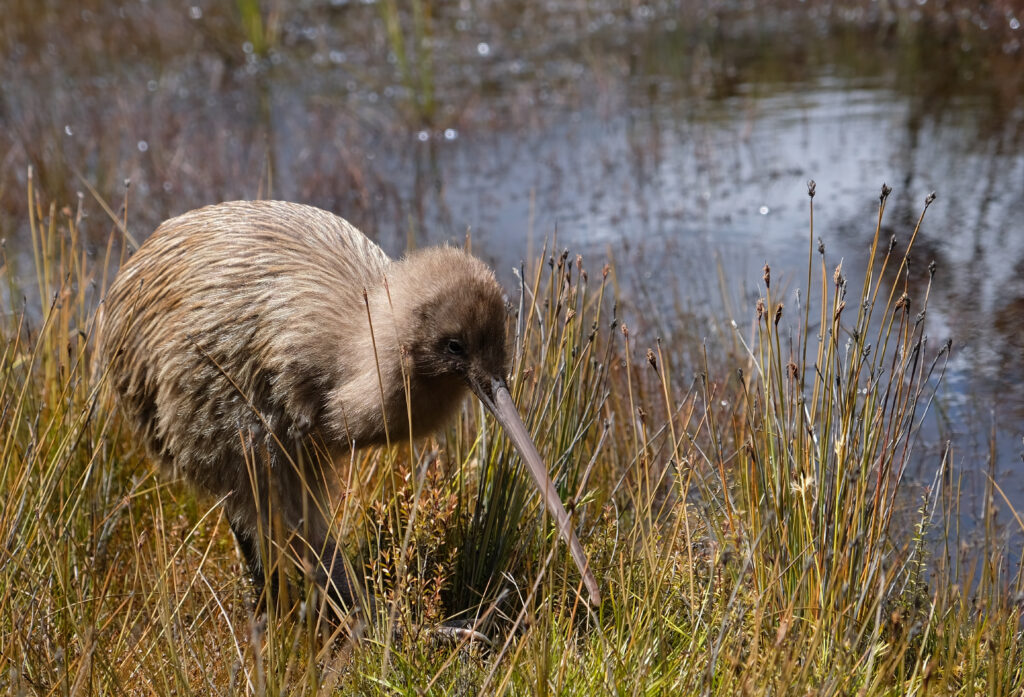
The kiwi bird is a flightless bird with a long, slender beak used to probe the ground for insects and worms. Covered in hairlike feathers, it has a soft, almost furry appearance. Unlike most birds, its nostrils are at the tip of its beak, giving it an excellent sense of smell. Kiwis are shy and mostly active at night.
This bird is deeply tied to New Zealand’s culture and identity. Females lay unusually large eggs compared to their body size, sometimes up to a quarter of their weight. The male often takes on incubation duties, sitting patiently until the chick hatches. Conservation programs work to protect kiwi populations from predators like stoats and cats.
Quokka – Rottnest Island, Australia
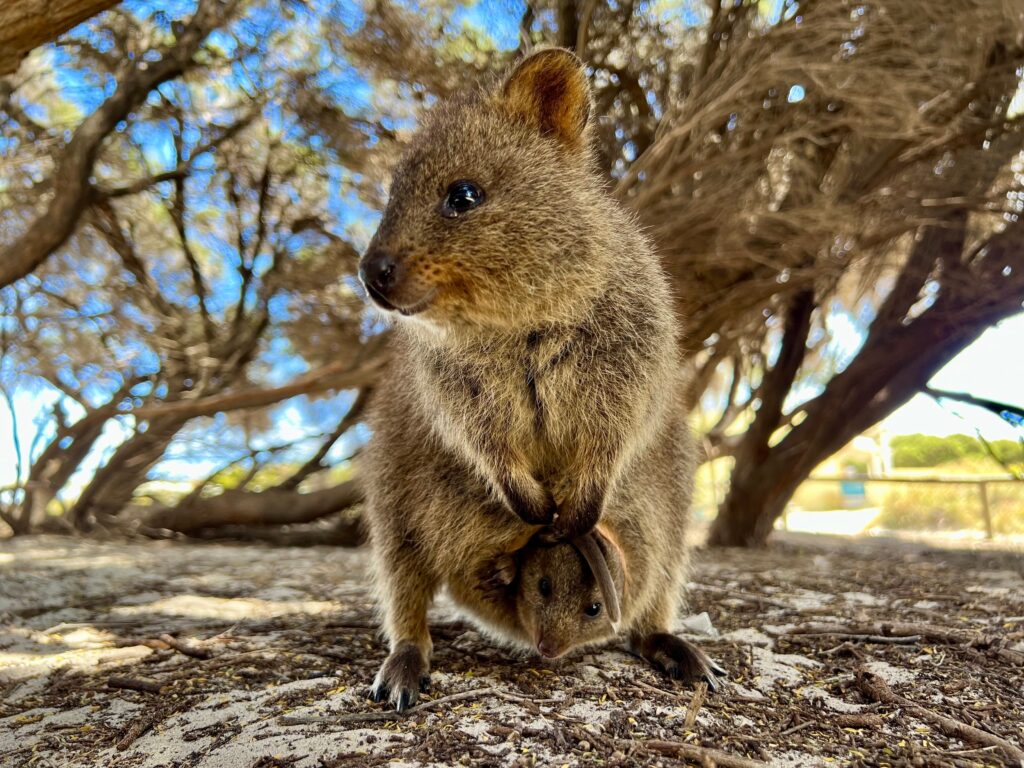
The quokka is a small marsupial known for its cheerful expression. Found mainly on Rottnest Island, it has become famous in recent years for “smiling” photos shared by visitors. It feeds on grasses and leaves, often foraging in small groups. Despite its friendly look, it remains a wild animal with natural instincts.
Quokkas are primarily nocturnal, resting during the heat of the day. They have adapted to limited water sources by getting most of their moisture from plants. Although they once lived widely across mainland Australia, predators reduced their numbers drastically. On Rottnest Island, free from many threats, they continue to thrive.
Blue-Footed Booby – Galápagos Islands, Ecuador
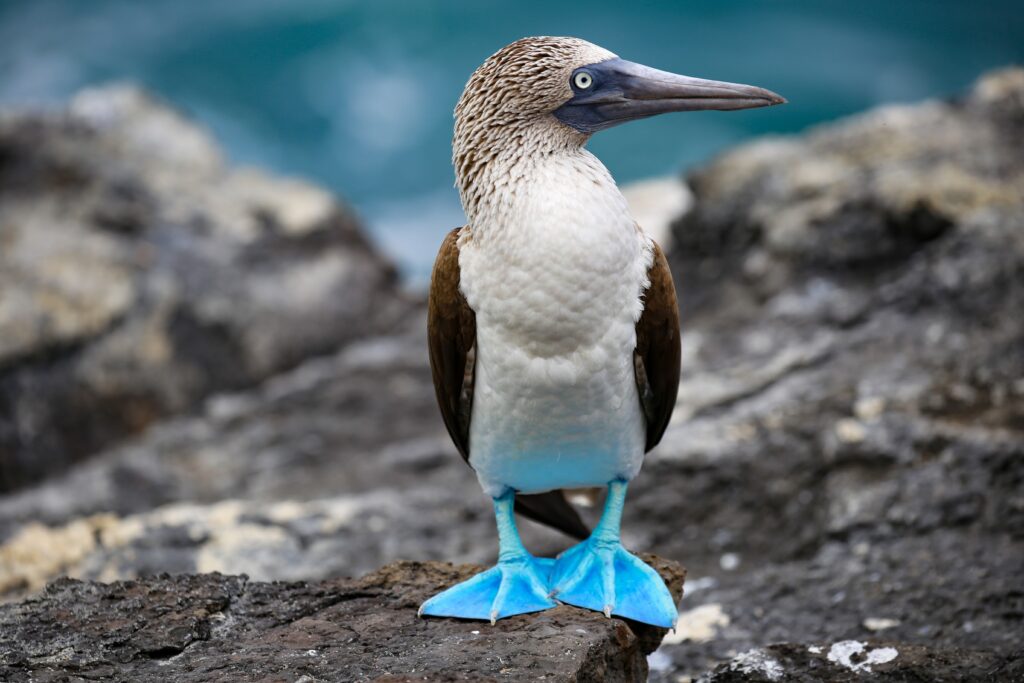
The blue-footed booby is instantly recognized by its striking turquoise feet. These bright colors play a role in mating displays, where males lift their feet in a special dance to attract females. With long wings and sharp eyesight, they are excellent hunters, diving into the ocean to catch fish. They often hunt in groups, plunging into the water almost in unison.
Nesting colonies can be noisy, filled with calls and movement. Parents share the duty of caring for chicks, shading them with their large feet when the sun is strong. The name “booby” comes from their clumsy gait on land, though in the air they are graceful and skilled. Visitors to the Galápagos often find them among the most entertaining birds to watch.
Kakapo – New Zealand
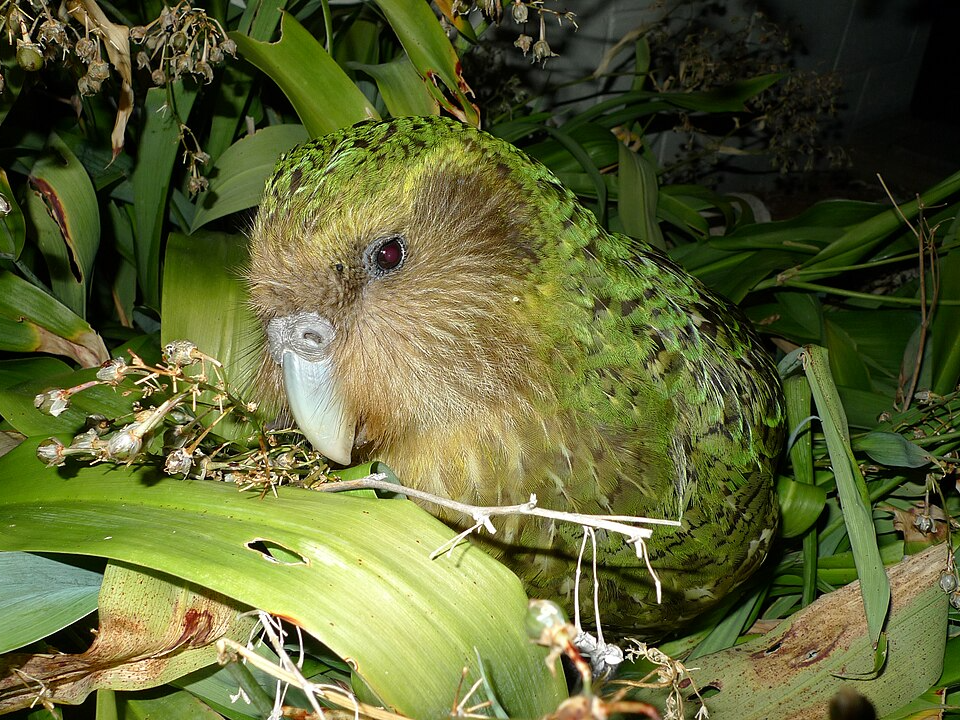
The kakapo is a large, nocturnal parrot that cannot fly. With its mossy green feathers, it blends perfectly into the forest floor. Once common, it became critically endangered due to introduced predators and habitat loss. Today, intensive conservation programs keep a close watch on the remaining population.
Kakapos are gentle birds with a unique personality. They feed on plants, seeds, and fruits, using their strong beaks to grind tough food. During mating season, males gather in special areas and produce deep booming calls to attract females. Though their numbers remain low, careful management has brought hope for their survival.
Pemba Flying Fox – Pemba Island, Tanzania
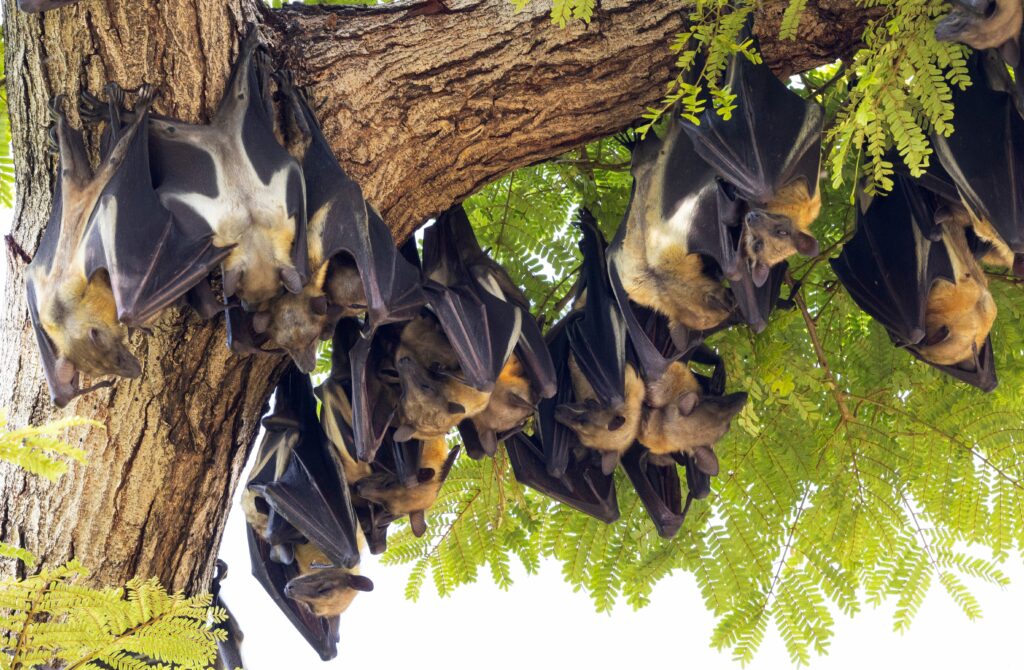
The Pemba flying fox is a large fruit bat with a wingspan that can stretch nearly six feet. It roosts in huge colonies during the day, often in tall trees near villages. At night, it takes to the skies in search of fruit, pollinating flowers and spreading seeds as it feeds. Its golden-brown fur and striking size make it a spectacular sight.
Though it once faced severe hunting pressure, conservation efforts have helped populations recover. Local communities now recognize its importance to the island’s ecology. By dispersing seeds over long distances, it helps maintain forest health. This makes the bat a key player in keeping Pemba’s environment balanced.
Sri Lankan Leopard – Sri Lanka
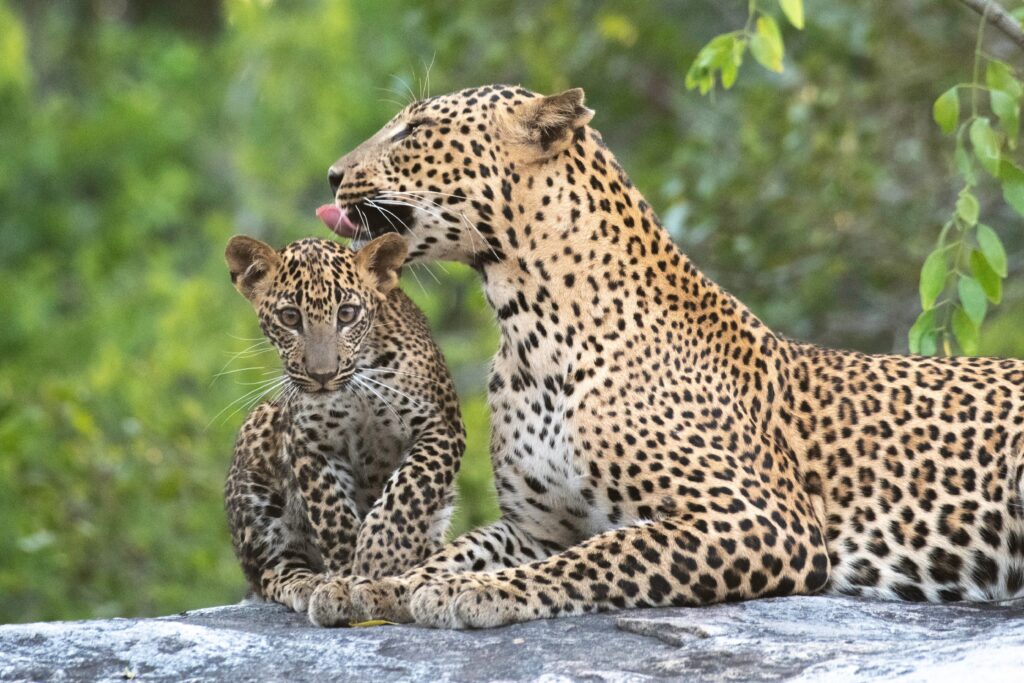
The Sri Lankan leopard is a powerful predator unique to the island. Smaller than African leopards, it is well adapted to the dense jungles and grasslands of Sri Lanka. Its spotted coat provides perfect camouflage while stalking prey. These cats hunt deer, monkeys, and smaller animals, often working alone.
Unlike many leopard subspecies, the Sri Lankan leopard is sometimes seen during the day. It rests in trees or on rocky outcrops, surveying the landscape for movement. Sadly, habitat loss and poaching threaten its survival. National parks across Sri Lanka provide refuge, giving visitors a rare chance to observe them in the wild.
Coconut Crab – Christmas Island, Indian Ocean
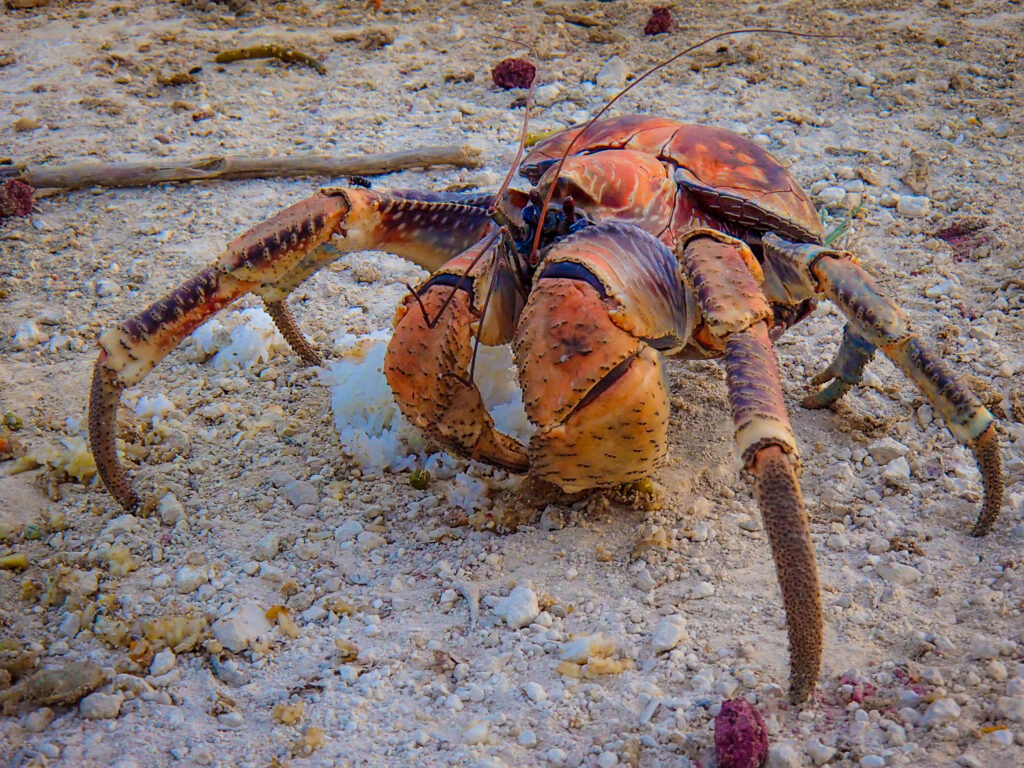
The coconut crab is the largest land-living arthropod in the world. With powerful claws, it can crack open coconuts, a skill few other animals can manage. These crabs are strong climbers, often seen scaling palm trees at night. Their size and strength give them an almost prehistoric look.
Despite their intimidating appearance, they play an important role in the island’s ecosystem. They scavenge and recycle organic matter, keeping the environment clean. Their long lifespan and slow reproduction make them vulnerable to overharvesting. Protected areas now help safeguard their populations for the future.
Galápagos Penguin – Galápagos Islands, Ecuador
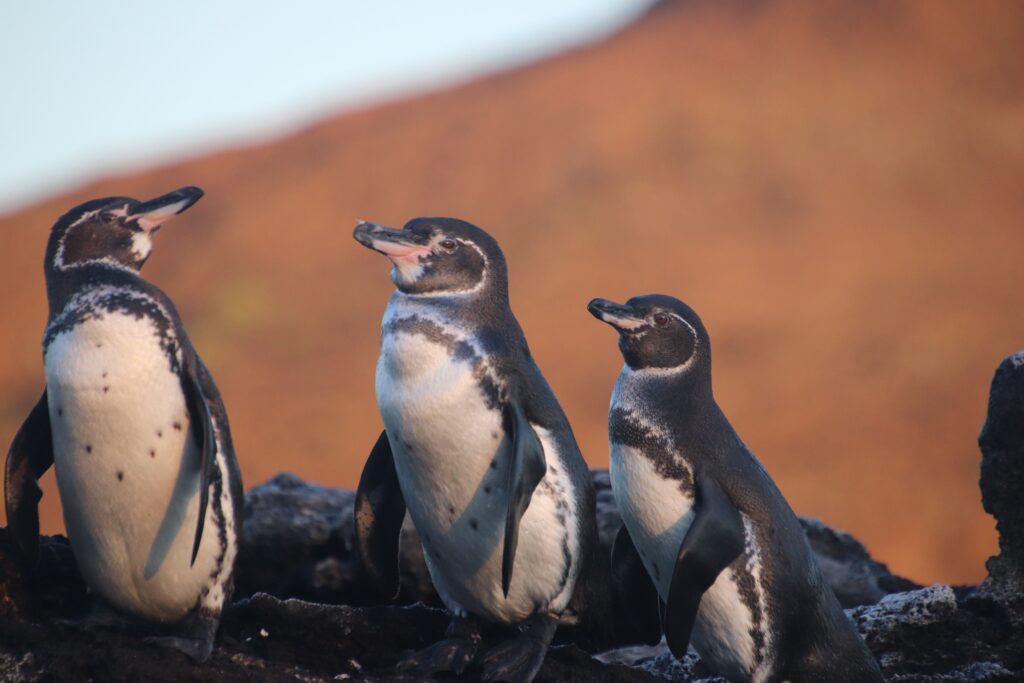
The Galápagos penguin is the only penguin species found north of the equator. Small and agile, it swims quickly through the warm waters surrounding the islands. Cold ocean currents provide the fish it needs to survive. These penguins nest in crevices and caves along rocky shorelines.
They live in small colonies and often pair for life. Parents take turns feeding their chicks until they are strong enough to hunt. Heat is a challenge for them, so they pant and stretch out their flippers to cool down. Despite their small population, conservation programs are working to protect their future.
Mauritius Flying Fox – Mauritius
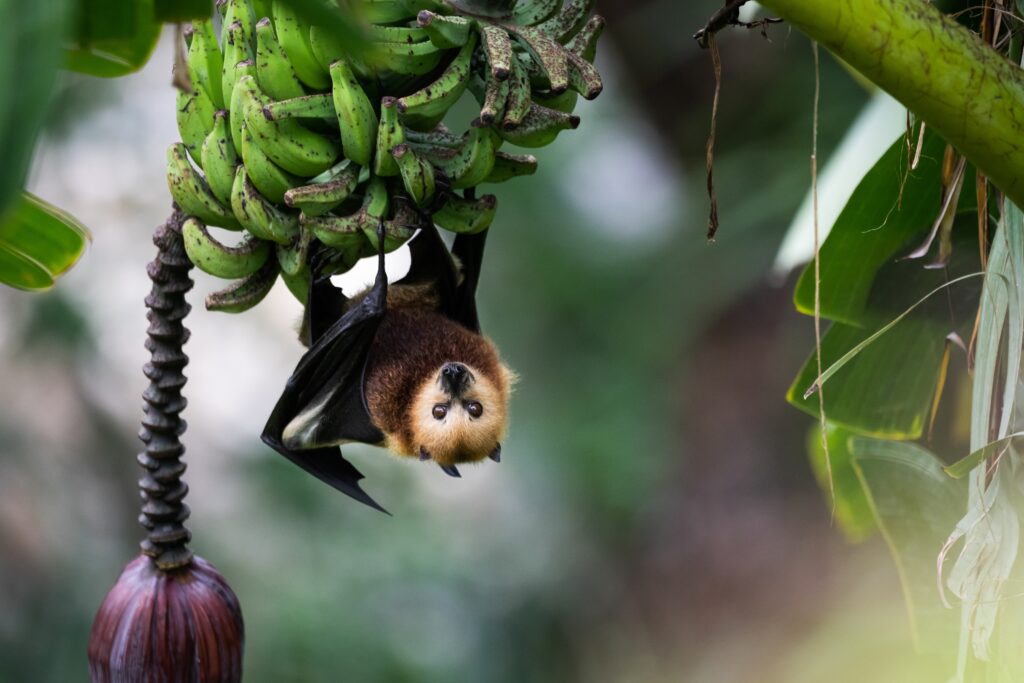
The Mauritius flying fox is a large fruit bat that feeds mainly on mangoes, lychees, and other tropical fruits. With its broad wings and golden fur, it is easily spotted against the island’s sky. These bats roost in large colonies during the day, filling trees with noise and movement. At night, they travel long distances to find food.
While some farmers view them as pests, they play a vital ecological role. By dispersing seeds and pollinating flowers, they help regenerate forests. Their survival has faced challenges from culling and habitat destruction. Conservationists continue to raise awareness of their importance to Mauritius’ biodiversity.
Echidna (Zaglossus bruijnii) – New Guinea

The long-beaked echidna is a unique mammal that lays eggs, one of the few species in the world that does so. Covered in spines, it resembles a hedgehog but belongs to an entirely different group. Its long snout and sticky tongue are perfect for feeding on worms and insects. Found in New Guinea’s forests, it remains little known to science.
Echidnas are solitary creatures that spend much of their time digging for food. They can curl into a ball, using their spines as protection from predators. Females lay a single egg, carrying it in a pouch until it hatches. Their rarity and unusual biology make them one of the most fascinating mammals of the region.
Sunda Slow Loris – Java & Nearby Islands, Indonesia
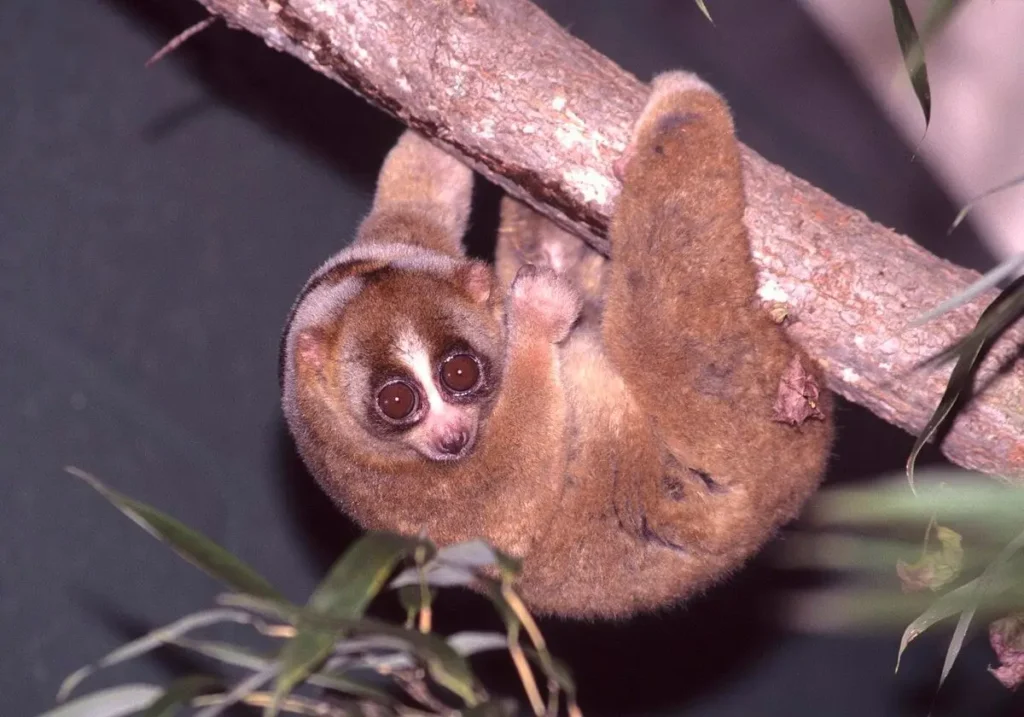
The Sunda slow loris is a small primate with large, soulful eyes. It moves carefully and deliberately through the trees, feeding on insects, fruit, and tree sap. Unlike most primates, it has a toxic bite, making it one of the few venomous mammals. Its nocturnal habits mean it is rarely seen by humans.
This loris plays a role in pollination and seed dispersal within its forest habitat. Unfortunately, it faces severe threats from illegal wildlife trade, where it is sold as an exotic pet. Conservation groups are working hard to rescue and rehabilitate captured individuals. Protecting its forest home is key to its survival.
Seychelles Black Parrot – Seychelles
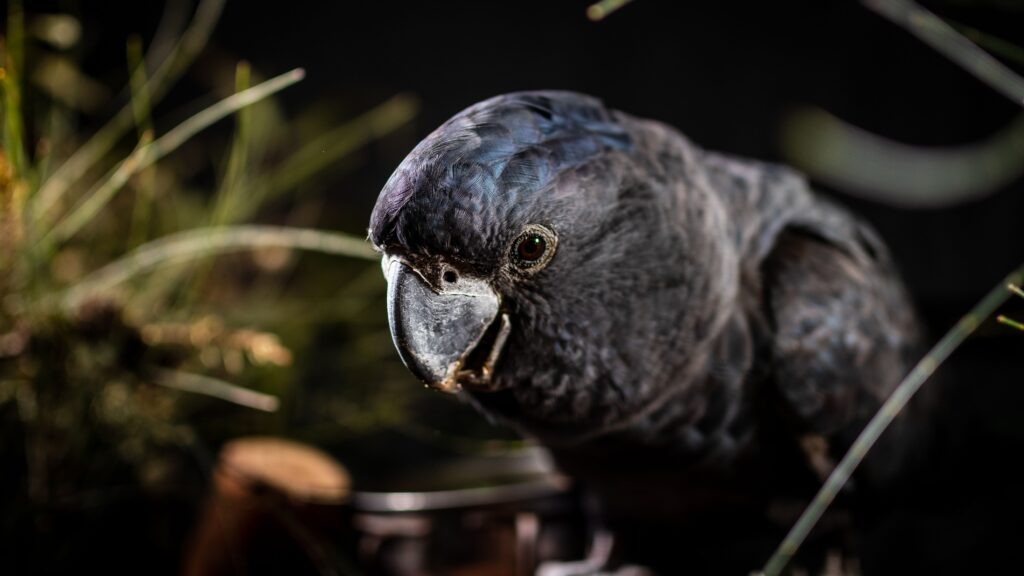
The Seychelles black parrot is the national bird of the Seychelles, found only on a few islands of the archipelago. Despite its name, its feathers are actually a mix of brown and gray tones. It prefers forested valleys where it feeds on fruits, flowers, and seeds. Its soft, whistling calls can often be heard before the bird itself is spotted.
Breeding takes place in tree cavities, where the female lays a small clutch of eggs. Both parents take part in raising the chicks until they fledge. The parrot’s survival depends on preserving its limited forest habitat, which faces pressure from development. Efforts to protect nesting areas have been crucial in keeping this rare species alive.
This article originally appeared on Avocadu.
